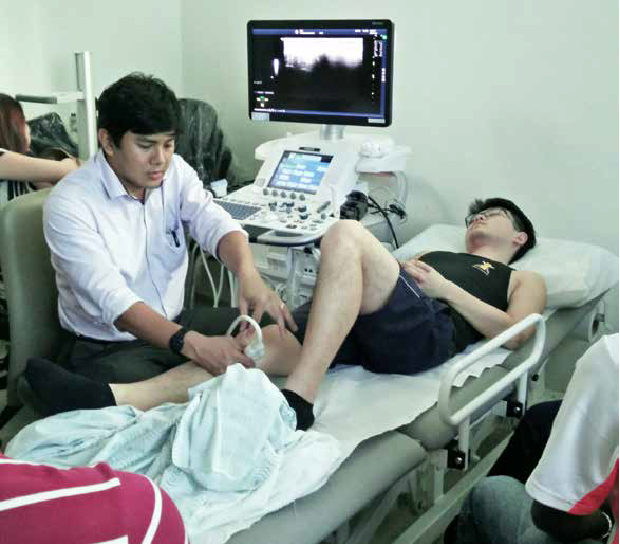
Dr Geoffrey Sithamparapillai Samuel is drawn to rehabilitative medicine because it allows him to treat patients holistically.
As a rehabilitation medicine specialist in an acute care hospital, Dr Geoffrey Samuel tends to see patients who are seriously ill. They may have been involved in bad traffic accidents or suffered a debilitating stroke.
Dr Samuel leads a multidisciplinary team to look into these patients’ longer-term recovery after their immediate medical needs have been taken care of and their conditions have stabilised. Getting them back on their feet, or at least as much as possible to where they were before, gives Dr Samuel the most satisfaction in his job.
“I want to help as many patients as I can to return to a good quality of life. I want to help them improve in terms of their function,” said Dr Samuel, Senior Consultant, Department of Rehabilitation Medicine, Singapore General Hospital (SGH).
“Rehabilitation is an active process. We set realistic goals for the patient and coordinate with different medical disciplines to help the patient achieve them. We prescribe exercises, and the optimum nutrition and medicine to improve strength and functioning.”
One of his more memorable cases involves a 54-year-old patient with a serious lung inflammation. The patient required a ventilator, and was treated in the intensive care unit (ICU) for half a year. After the patient recovered, uncertainties remained over his post-discharge recovery — would he be able to live independently at home?
Surprisingly, some months after, the patient was able to go about his everyday life on his own, such as grocery shopping. His progress exceeded expectations; the patient had been expected to need at least the use of a portable oxygen concentrator when he went out.
While the medical team — occupational therapists, speech therapists, physiotherapists, music therapists and psychologists — worked on different areas of the patient’s recovery, Dr Samuel believes it was the patient’s determination that made a difference.
Dr Samuel oversees the patients’ rehabilitation and sets realistic rehabilitation goals and troubleshoots issues, such as mood, pain or nutrition. If necessary, referrals to other disciplines are made. As the patients improve, the team plans for their discharge to a rehabilitation facility or back home for further treatment as an outpatient.
Although it can be a challenge to coordinate between multiple team members, it is precisely this holistic approach to treating patients that inspired Dr Samuel in rehabilitation medicine.
“Patients often have multiple interacting medical problems. They may primarily have lung issues but may also have problems with the heart or kidney functions, so all these need to be looked after,” he said.
In 2015, Dr Samuel went to Taiwan to specialise in musculoskeletal disorders under the Ministry of Health’s Health Manpower Development Plan programme. “In Taiwan, rehabilitation medicine is very well developed, with large departments to look after different aspects of recovery, particularly in stroke rehabilitation,” he said.
The country’s well-run rehabilitation system, he said, allows patient recovery to continue outside the hospital. Patients with musculoskeletal problems, for instance, can be seen in outpatient clinics.
Treating critically ill patients in the ICU has made Dr Samuel understand the frailty of life. “People who may seem well can suddenly become unwell. It makes me appreciate relationships more, beyond pursuing personal achievements,” he said.
Outside his hectic work life, Dr Samuel enjoys gardening at home to de-stress. The father of two grows plants, such as mint and aloe vera, and listens to Mandopop by Jay Chou and Taiwanese band Mayday to relax.
Get the latest updates about Singapore Health in your mailbox! Click here to subscribe.













 Get it on Google Play
Get it on Google Play